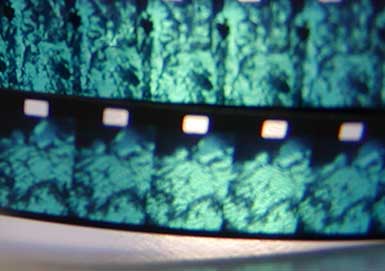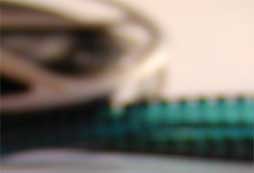English Pronunciation and the International Phonetic Alphabet 2 (Consonant Manner): A Video Transcript
(Want to see new videos automatically? Subscribe to my YouTube Channel!)
Hi, this is Gabe from Towerofbabelfish.com.
This is the second tutorial on English pronunciation and the IPA, and it’s a fun one, now that you’ve learned voicing and place.
We’re going to learn about what you can do at each of these places, and in the process I’ll try to make as many of these sounds as I can. I’m doing a video feed of my face so you can see what my lips are doing.
So without further ado, here’s the IPA consonant chart!
You’ll see that places are on top - there are 12 of them total - we skipped retroflex, which isn’t used very often - it’s like alveolar but with the underside of the tongue. I’ll do them, but I don’t promise perfect accuracy; I don’t speak any languages that use them, so we’ll see what happened.
We also skipped epiglottal, which almost noone uses and it’s really hard to do! It’s like pharyngial but with the epiglottis - a piece of cartiledge that prevents food from going down your windpipe. I’m not going to demonstrate because I have no experience with it at all!
So manner is on the left side - you’ll see we have 9 of them.
You’ll remember from the last video that a consonant is caused by closing the airflow somewhat. They’re arranged very roughly in an order of how closed off they are in the mouth - nasal is closed off completely in the mouth, fricative is closed almost completely, approximants are closed just a little bit, etc.
We’ll start from the top - Nasal. As you might have guessed, this involves air coming out of your nose. You’ll recognize a lot of these consonants, and they all block the path of air out of the mouth, so it travels out of the nose making an n or M -type sound. Here they are in order:
m ɱ n ɳ-ret ɲ-pal ŋ-vel ɴ-uvular
You’ll notice that they’re all voiced - this doesn’t have to be the case; there is a symbol in IPA that unvoices things - it’s a little circle underneath. But the problem with nasal consonants is that if your mouth is closed and you’re not making any sounds with your vocal coards, then all you get is air coming out of your nose. But some languages do use this. Icelandic - we’re going to keep coming back to Icelandic because it has all these cool consonants - Icelanded uses unvoiced nasal consonants, and so you have this awesome word for knife, which is hnivr. You’ll notice the R should be unvoiced. Hnivr. Let’s move on to plosives.
Plosives stop the air completely and then air comes through and pops it open with a little explosion of air. You’ll notice that they come in pairs. There’s one on the left that’s voiceless, and one on the right that’s voiced.
We have:
p/b t/d ʈ/ɖ-ret c/ɟ-pal k/ɡ q/ɢ and the glottal stop ʔ
Now for the hardest one, fricatives. There are a lot of fricatives. Fricatives are when you close the articulators most of the way, and air blows through in a turbulent, raspy sound. Again, you have unvoiced ones on the left, and voiced ones on the right.
So, here goes:
ɸ/β f/v θ/ð s/z ʃ/ʒ ʂʐ (ich)ç/ʝ x/ɣ χ/ʁ ɦ
OK, Now for approximants. These should be easier for me, there are only five of them on this chart. Approximants are made by…you close the airflow just a bit - not enough to make a turbulent, fricative sound. It’s just enough to change the sound a little bit.
ʋ ɹ ɻ j ɰ
Now, there’s one missing here - a really important one - which is /w/ - the english w. The reason it’s missing from this chart is because it’s an approximant, but it’s in two places at once. The tongue is raised in the back, like the velar approximant ɰ - but also your lips are rounded, so you get /wa/
Now for trills
In a trill, you take the active articular and put it against the passive articulator like any sort of plosive thing, but you blow it open and close it rapidly. And so it vibrates against there. So lets say you have the tongue and the alveolar ridge: the tongue will vibrate against the alveolar ridge, and you’ll get a sort of repeated plosive sound.
There are three of them in IPA. You have ʙ r ʀ
These three are voiced, but again, if you stick a little circle underneath, you’ll get the unvoiced version. And again, in Icelandic and Welsh, you’ll find this. They have voiceless alveolar trill /r/
If trills are like repeating plosives, then taps or flaps are the opposite - it’s just one single, quick contact between two articulators.
IPA has three of them: ⱱ ɾ ɽ
Now for the lateral consonants. The lateral consonants are where the tongue comes up in the front and closes off in the front of the mouth, but air is allowed to escape over the sides so you get L-type sounds
There are two lateral fricatives - voiced and unvoiced - and you’ll find unvoiced ones in, surprise, Icelandic and Welsh.
These are: ɬ ɮ
There are four lateral approximants are more common. We have:
l ɭ ʎ ʟ
The English, or the American standard /l/ is actually a combination of two of these. You get the tongue raised in the front, like the alveolar /l/ and you get the tongue raised in the back, like the velar L, so you get them both together.
There’s one lateral flap - /ɽ/, and that’s it for the IPA.
You’ve seen that you can get more sounds if you combine some of these, like in our w - which is a velar approximant with rounded lips, or our L which is an alveolar and velar lateral approximant. Or you can add these diacritics, like the devoicing thing for all these Icelandic consonants. If your target language uses one of these, you’ll find it in that language’s phonology article on wikipedia.
Let’s go over the english consonants. We have the voiced bilabial nasal /m/, the voiced alveolar /n/, and sometimes the velar nasal /ŋ/ in words like king
Our plosives are all in voiceless/voiced pairs - we have the bilabial /p/ and /b/, the alveolar /t/ and /d/, and the velar /k/ and /g/. You’ll notice that the voiceless ones, p t and k are all aspirated, meaning that there’s a big puff of air that comes out. The voiced ones are not really aspirated - there’s a lot less air that comes out.
The last plosive in English is the glottal stop, where the vocal cords shut completely. You’ll find it before words that start with vowels - like in uh-oh, or nuh-uh and it sometimes replaces T, like button or catnip - instead of button or catnip.
In terms of fricatives, they’re almost all in voiceless/voiced pairs. We have the labiodental f/ v, the dental θ ð, the alveolar s z, the post-alveolar ʃ, ʒ, and the unvoiced glottal fricative /h/
We have three approximants - the alveolar /r/, the palatal /j/, and the labio-velar (meaning lips rounded, back of tongue up) /w/
Last, but not least, there’s the lateral approximant /l/, which, if you’re american, is usually velarized too./L/
That’s it! I’ll have an Anki deck on the website with all of this info if you want to memorize it easily, or you can make your own using the IPA article on Wikipedia. We’ll start vowels next. Until then!


